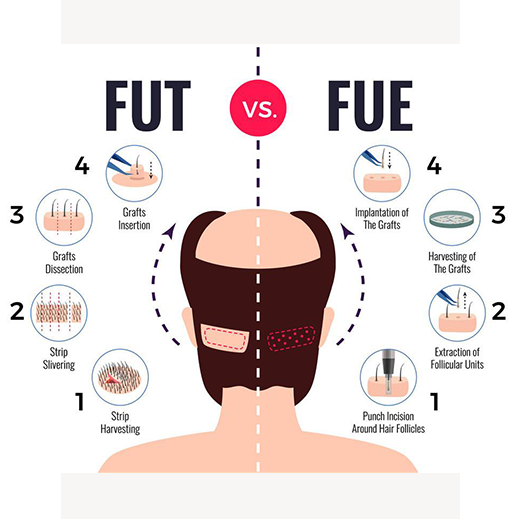Hair Transplant
What is hair transplant?
Hair transplant is a procedure whereby your hair from the back or the side of your head is moved to the bald or thinning area of the head, usually the front or the top of the head.

How does hair transplant work?
Patients undergoing hair transplants will go under local anesthesia prior to the treatment. Your doctor may use one out of two main techniques for hair transplant, which are follicular unit transplantation (FUT) and follicular unit extraction (FUE).
In FUT, a strip of scalp skin of several inches long will be cut from the back of the head, the gap of which will then be closed with stitches. The surgeon will then separate the removed scalp portion into smaller sections, which when re-implanted will achieve a natural-looking hair growth.
In FUE, your hair follicles are cut out directly from the back of your head through hundreds to thousands of tiny punch incisions. Afterwards, the surgeon will make tiny holes with a blade or a needle in the area of the scalp receiving the hair transplant. The hair follicles will be placed in these tiny holes. Hundreds or thousands of hair follicles will be transplanted in one treatment session, after which the graft, gauze or bandages will cover your scalp for the next few days.
Benefits of hair transplant
- Increase confidence
- Natural hair restoration method
- Low maintenance
- Long-lasting results
- No adverse reactions
- Permanent solution
Frequently Asked Question
The side effects of hair transplant are usually minor and temporary, and can include bleeding, scalp swelling, numb sensation around the treatment area, inflammation of hair follicles and the like.
You may need several days after a treatment session before you can return to normal routines.
One hair transplant session can take four hours or more. You may need about three to four sessions to achieve the desired appearance, with an interval of several months to allow your hair transplant to fully heal.


